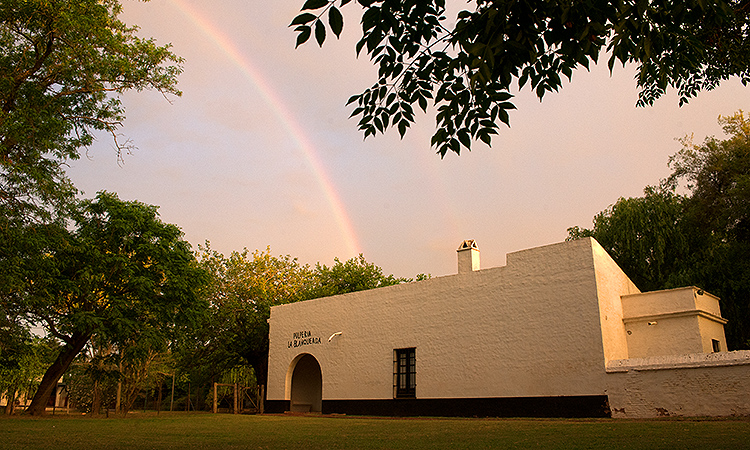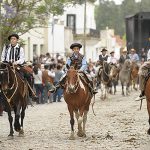Criollo Park & Ricardo Güiraldes Museum: A Cultural Treasure
Criollo Park, totaling 90 hectares, is located on the edge of San Antonio de Areco: along with the Ricardo Güiraldes Museum, it is the pride of the Arequeros.
A Telling Name

The museum is named after one of Argentina’s most admired poets: Ricardo Güiraldes. His most well-known work, Don Segundo Sombra, draws inspiration from the personality and the lifestyle of Segundo Ramirez, a gaucho who worked on one of his family’s Estancias: La Porteña. The museum tells the story of Ricardo’s life whilst also providing a window into Argentine traditions.
A Coalition Allows the Museum to be Built
Ricardo Güiraldes died in 1927, aged 41. In 1936, both in honor of Güiraldes and in order to preserve Argentina’s traditions and promote local values, José Antonio Güiraldes, Ricardo’s brother, curated an exhibition of traditional artifacts in the city hall of San Antonio de Areco.
José Antonio’s friend, José Maria Bustillo, an architect, attended the exhibition on the day of its inauguration. Moved by his friend’s act, Bustillo proposed the creation of a park in order to preserve the heritage of Argentina. Once his proposal was approved by the Minister of Public Works, Criollo Park and the Ricardo Güiraldes Museum were built in 1937, on a huge tract of land upstream from Areco River. The style of the building in which the museum is housed is Spanish-colonial, in reference to the old Estancias of the Province.
The museum belonged to the province of Buenos Aires until the 1980s, when it was transferred to the Municipality of San Antonio de Areco.
A Museum of Argentinian Heritage

The Blanqueada, an old pulpería (grocery shop and bar) and a little chapel, located at the entrance of the museum and beside the famous Camino Real, are both over 200 years old. The Camino Real (Royal Road) is a highway dating back to the colonial era. It connected the old viceroyalties of Upper Peru and Rio de la Plata.
A hundred meters further back, stands a second Spanish style building, complete with watchtower. Housed in this building are the works, manuscripts and furniture of Güiraldes, as well as an incredible collection of art and historical artifacts. The contents of the museum bring the history, traditions and culture of Argentina to life.
On the other side of the park there is a third building, La Matera, which is used for events. The Arequeros like to meet here for peñas, to dance traditional folkloric dances.
The park and its museum are considered so important to Argentina that they were named National Historical Monuments in 1999.
The Brand of “La Guadaña”
“La Guadaña” is the first brand recorded in “The Registration Office of Brands” in 1822. It belonged to Don Francisco de Salas Videla and it is still used today to brand the cattle of Criollo Park.

The Museum is Saved from Water Damage
There was extreme weather in San Antonio de Areco in December 2009. A terrible flood impacted the town and many buildings on the banks of the river were damaged, including the Ricardo Güiraldes Museum. Water rose to over a meter inside and antique furniture and other artifacts were damaged. Following the damage to the museum, a restoration and renovation program was implemented over a period of two years, after which the museum was reopened to tourists and locals.
The renovation was also used as an opportunity to reorganize the museum’s exhibitions. The collection is now spread throughout several different rooms, each of which has a different name and theme, with paintings, silver smithery, biographies, agriculture etc. There is more than enough to interest even the biggest history buff.
Each year in November, Criollo Park and the Ricardo Güiraldes Museum are the focal points for the Festival of Tradition, the oldest gaucho festival in Argentina. It’s a fantastic opportunity to enjoy traditional music and dance and also watch incredible equestrian games and performances by the cowboys of the Pampas.






